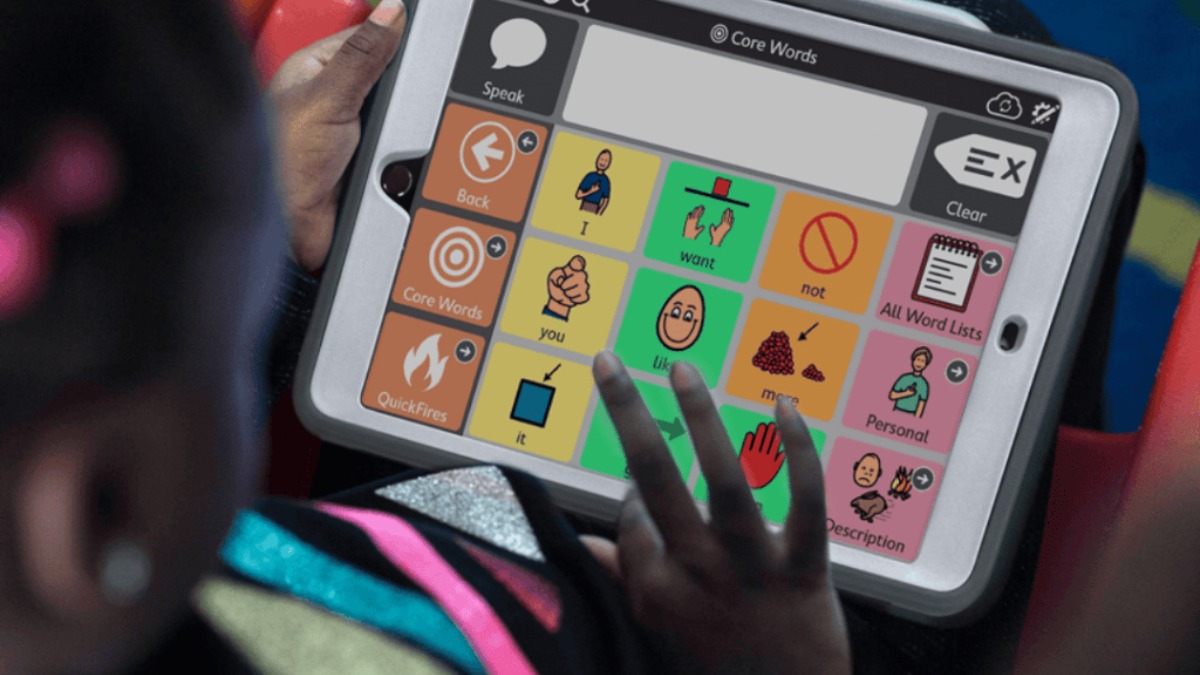How Long Does DIR Floortime Take to Show Results?
April 23, 2025
Curious about DIR Floortime? Learn how long it typically takes to see meaningful progress and what factors influence the timeline for results.

Key Points:
- DIR Floortime focuses on developmental milestones, helping children with social, emotional, and cognitive delays.
- The time it takes for DIR Floortime to show results varies widely based on the child’s unique needs.
- Consistency, quality of therapy, and the involvement of caregivers play major roles in how quickly improvements are seen.
A study involving 34 children aged 2 to 6 years with ASD found that after one year of home-based DIR/Floortime intervention, with parents dedicating an average of 14.2 hours per week, 47% of the children showed significant developmental progress, improving by 1.5 Functional Development Levels (FDLs) or more.
Importance of DIR Floortime in Child Development
DIR Floortime is a powerful approach that supports multiple aspects of child development by focusing on individual differences, allowing for personalized interventions that lead to more effective outcomes. This method enhances key developmental areas, including:
- Emotional Development: Improves emotional expression and regulation, helping children manage their feelings.
- Social Skills: Fosters social interactions and relationship-building, encouraging peer connections.
- Cognitive Growth: Promotes problem-solving, critical thinking, and intellectual curiosity.
- Language Development: Encourages both verbal and non-verbal communication, enhancing language skills.
4 Factors Influencing the Speed of Progress in DIR Floortime
DIR Floortime, which stands for Developmental, Individual-differences, Relationship-based, is a personalized approach designed to meet each child where they are. Several factors can significantly impact how long it will take for DIR Floortime to show results. By understanding these, parents and caregivers can better set realistic expectations.
1. Individual Needs and Developmental Delays
The most significant factor in how quickly you will see progress is the child's individual needs. DIR Floortime addresses developmental delays in social, emotional, and cognitive areas.
If a child has multiple developmental challenges, such as difficulty with communication, motor skills, or self-regulation, progress may be slower. In these cases, it’s essential to focus on long-term goals rather than expecting immediate results.
2. Therapy Consistency and Frequency
The frequency of DIR Floortime therapy plays a significant role in the pace of progress. Generally, the more sessions a child receives, the faster the results may become noticeable. Many experts recommend weekly or even multiple sessions per week, particularly for children with more significant developmental delays.
However, consistent involvement outside of therapy, like engaging in play activities at home, can also accelerate improvements.
3. Caregiver Involvement and Engagement
One of the unique aspects of DIR Floortime is its emphasis on involving caregivers in the therapeutic process. The model encourages parents and family members to actively participate in sessions, which helps reinforce the learning and emotional connection at home. Active caregiver engagement can have a dramatic effect on how quickly a child responds to therapy.
4. Therapist Expertise and Relationship
The relationship between the therapist and the child also impacts progress. A skilled therapist who understands the principles of DIR Floortime and is able to form a strong, trusting bond with the child can create a supportive environment that fosters faster developmental gains.
Building trust takes time, especially with children who may have social or emotional challenges, but when this bond is established, it can speed up the therapy process.

Typical Timeline for Results in DIR Floortime
Understanding the timeline for DIR Floortime results can help parents gauge the effectiveness of the approach. Results can vary significantly based on individual circumstances and the consistency of the practice.
Short-Term Effects
In the early stages of DIR Floortime, parents may begin to notice immediate responses from their child. These short-term effects can often be observed within the first few weeks of engagement.
Changes may include increased eye contact, improved communication efforts, and a greater interest in play.
Medium-Term Progress
As therapy continues, more noticeable improvements in social skills and emotional connections typically emerge within a few months.
Children often become more attuned to their environment and develop a better understanding of social cues.
Long-Term Outcomes
With sustained DIR Floortime practice over several months or years, significant developmental milestones can be achieved.
Long-term outcomes often include improved functioning in social settings, enhanced adaptive skills, and a greater capacity for emotional regulation.
The effectiveness of DIR Floortime is influenced by various factors, including the child's unique needs and the consistency of the approach. Parents are encouraged to remain patient and observant as their child progresses through these stages.

Understanding the Progress Timeline in DIR Floortime
The timeline for visible progress in DIR Floortime therapy varies significantly based on the factors we discussed. However, it’s important to note that the process is not always linear. Some children may show rapid improvement in certain areas but plateau in others. Others may progress more steadily across multiple areas of development.
Early Progress: 3 to 6 Months
In the first few months of therapy, you might notice some initial improvements. These could include better social engagement, an increased desire to interact, and some improvement in communication skills.
However, don’t be discouraged if you don’t see significant changes right away. Progress can be slow initially, and every child develops at their own pace.
Moderate Progress: 6 to 12 Months
Between six months to a year, more noticeable progress may occur, particularly in communication and social interaction. Children may start to initiate more interactions, use more language, and engage in more meaningful play.
It is during this time that many parents feel more confident that the therapy is working.
Long-Term Progress: 1 to 2 Years and Beyond
For long-term, sustainable improvements, you may see gradual, steady progress over a period of one to two years or more. This longer timeline allows for consistent growth in all areas of development.
However, it is essential to continue therapy and maintain consistency, as ongoing support can be key to achieving lasting results.

Monitoring Progress of a Child
Monitoring the progress of a child undergoing DIR Floortime is crucial to understanding how well the approach is working. Proper tracking can help parents identify milestones and communicate effectively with professionals about their child's development.
Tracking Milestones and Changes
It is essential for parents to keep a record of their child’s achievements and developmental changes over time. By systematically tracking these milestones, parents can gain a clearer understanding of the effectiveness of DIR Floortime and areas that may need additional support.
Communication with Professionals
Maintaining open communication with professionals involved in a child's DIR Floortime is vital for ensuring that strategies are being effectively implemented. Parents should provide regular updates on their child's progress and any observed changes. This information can help professionals tailor their approach and provide more personalized support.
Key aspects to address in communication include:
- Frequency of sessions and any changes in participation
- Specific milestones tracked and observed improvements
- Any challenges faced during sessions and suggestions for adjustments
Actively engaging with professionals, parents can contribute positively to the overall success of DIR Floortime, enhancing the likelihood of achieving desired results. This collaborative approach fosters a supportive environment for both the child and the family.

Adjustments and Modifications in DIR Floortime
In the context of DIR Floortime, adjustments and modifications are key to maximizing effectiveness. Every child possesses unique needs and responds differently to interventions. Therefore, flexibility in the approach is essential for positive outcomes.
Flexibility in Approach
Flexibility is key when using DIR Floortime strategies, as it allows parents and professionals to tailor the approach based on the child's responses, interests, and developmental stage. Observing the child’s engagement and making real-time adjustments ensures continued motivation and active participation. Here are key aspects of flexibility in Floortime:
- Session Length: Adjusting the duration of sessions to match the child’s attention span, ensuring they remain focused and engaged.
- Activity Choice: Modifying activities to align with the child’s current interests, enhancing engagement and motivation.
- Interaction Style: Varying the level of interaction, from passive listening to active participation, to match the child’s comfort and developmental needs.
Adapting DIR Floortime Strategies to Individual Needs
Each child has unique strengths and challenges, requiring personalized strategies within the DIR Floortime framework. Tailoring methods to address individual needs ensures the approach remains effective and relevant. Below are suggested modifications to help meet specific developmental areas:
- Low Engagement: Introduce sensory-rich activities to capture attention and spark interest.
- Communication Challenges: Use visual aids, such as pictures or signs, to support understanding and expression.
- Emotional Regulation: Integrate calming techniques, like deep breathing or quiet spaces, to help manage emotions and encourage self-regulation.
These adjustments enable parents to better support their child's growth in a way that aligns with their unique needs—just like the approach highlighted in our article Unlock Developmental Milestones with Floortime Learning Tree, which offers practical insights into nurturing progress through connection and play.
Get Started with DIR Floortime Therapy Today!
At WonDIRfulPlay, we specialize in DIR Floortime therapy in New Jersey, focusing on providing personalized care to children with developmental delays. If you're ready to give your child the best opportunity to thrive emotionally, socially, and cognitively, contact us today to learn more about how we can help your child reach their full potential.
Let’s work together to create a positive and supportive environment for your child’s growth and development.
Recent articles

















.jpg)


.jpg)






.jpg)











.jpg)
.jpg)

.jpg)
.jpg)
.jpg)



.jpg)
.jpg)
.jpg)

.jpg)
.jpg)

.jpg)



.jpg)


.jpg)
%20(1).jpg)

.jpg)






.jpeg)









.jpg)
.jpg)
.jpg)
.jpg)
.jpg)


.jpg)
.jpg)
.jpg)
.jpg)
.jpg)
.jpg)
.jpg)
.jpg)
.jpg)
.jpg)
.jpg)
.jpg)
.jpg)
.jpg)
